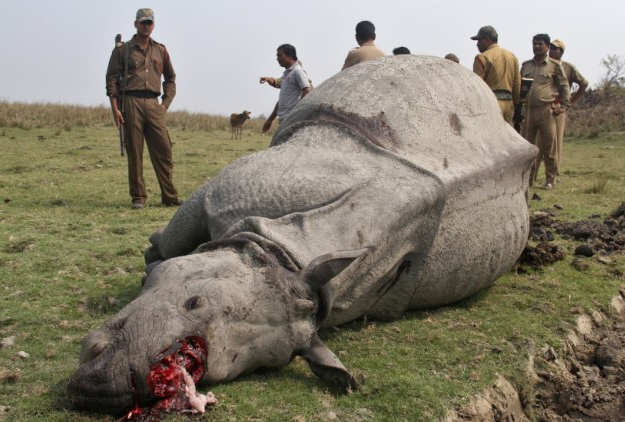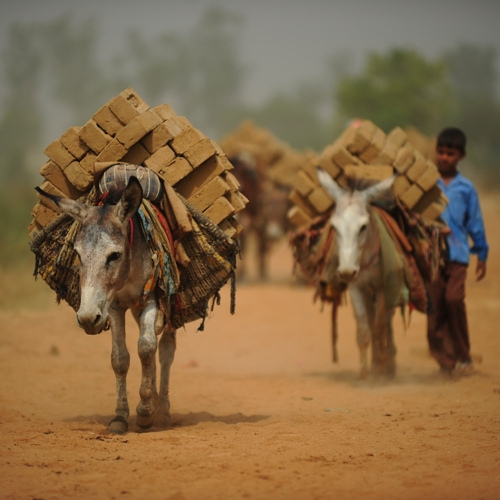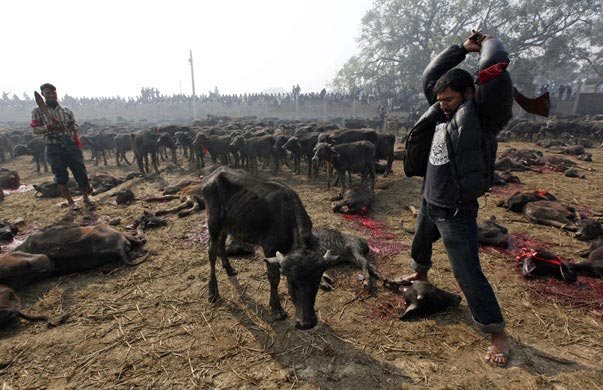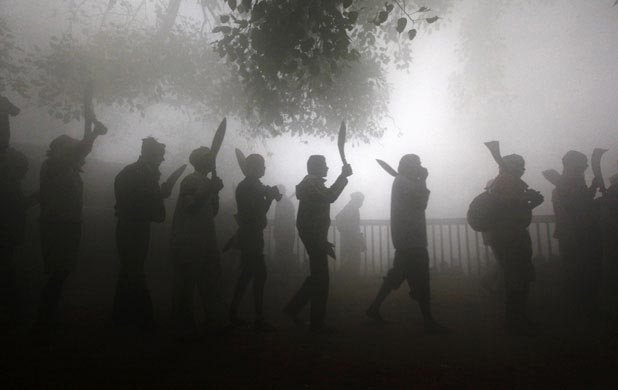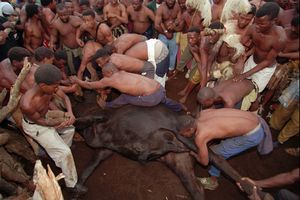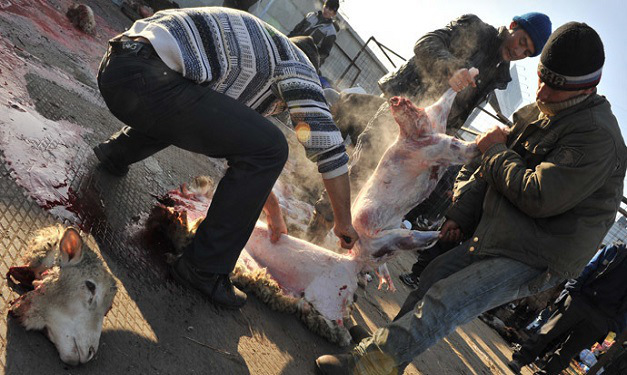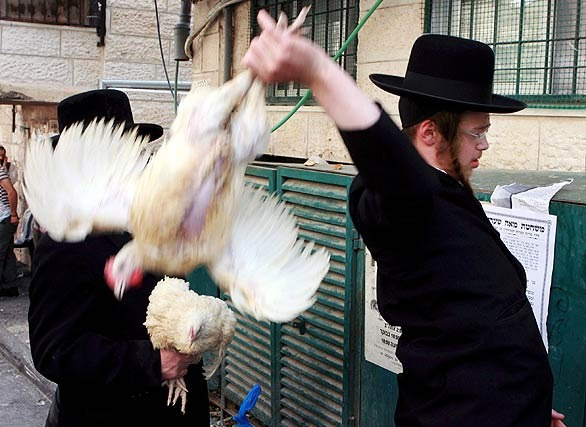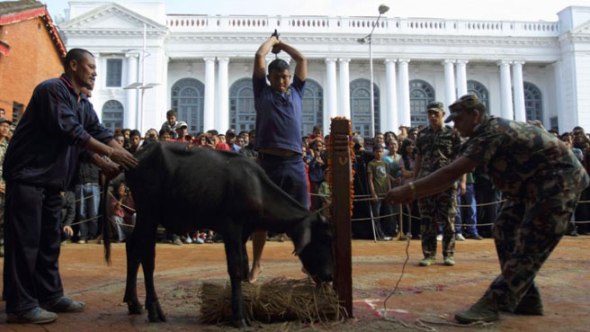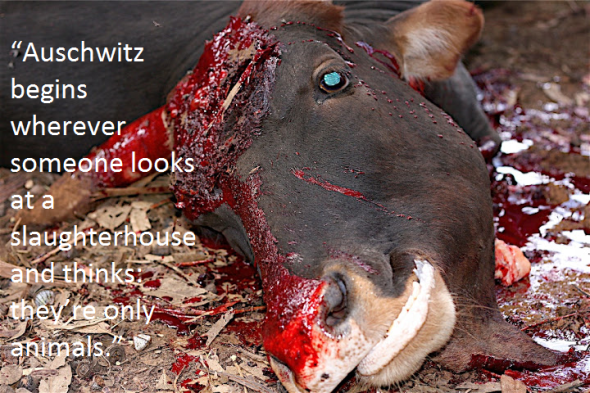India: War on Poaching Intensifies.
India: War on Poaching intensifies.
Since early May 2012 the Indian State, Maharashtra government provided all of its rangers a shoot to kill licence directly aimed at “poachers” regardless of age, sex or religion. The shoot to kill order was given of which rangers are immune from prosecution due to high levels of Rhino, Tiger, Lion and, Elephant poaching within the country.
When International Animal Rescue Foundation India became aware of Maharashtra government’s demands they watched and waited for results of which back then were little however, since 2013 rangers have been actively involved in over one hundred and forty nine legal killings with a further eleven so far to date (13th June 2015). The number is believed to be a lot higher. Furthermore as poaching is not just confined to “animals” but also the sacred sandalwood, forestry rangers have been actively engaging sandalwood poachers and smugglers too.
April 4th 2015 forestry rangers and Police came under heavy gunfire in two separate locations within Tamil Nadu, Chittoor. Police and forestry guards tried to apprehend some twenty sandalwood poachers/smugglers of which took off into the sandalwood forests in Andhra Pradesh. The first shoot out saw some saw some nine smugglers shot dead in one area of the sandalwood forest that is unknown to us while a second saw a further eleven smugglers shot dead in what was described as a “heavy exchange” of bullets from both sides within Chittoor in Southern Andhra Pradesh. While some people have stated this action unjust we please ask you to continue to reading (to the bottom) for you to fully understand why the Police and forestry services may have took such action.
2015 has been quite a busy year thus far for forestry rangers and Police. At the start of the year, 15th January 2015 three Rhino poachers that were directly ordered to lay down their weapons aimed them at forestry guards opening fire. The incident that took place in the Kaziranga National Park, in the remote state of Assam prompted forestry guards to act quickly and professionally to preserve the sacred One Horned Rhino of which they shot the three poachers dead instantly. Fortunately no forestry guards or the Rhino were injured this time.
March 2015 a further three ivory poachers that were caught red handed slaughtering an Indian Rhino of which the Indian Rhino lost its life and was left in a pitiful state were shot dead immediately. We’ve included the image of that Rhino below for your information and to grasp why we and India have now had enough of this slaughter and will take the relevant steps required to support our men and women to secure our fauna and flora.
Image: Rhino killed by ivory poachers - poachers shot dead on site.
While poaching continues so does “hunting the poachers too” and so it rightfully should. International Animal Rescue Foundation India supported by its sister Africans Environmental company, began paying five “unnamed” forestry units within the shoot to kill zones larger cash incentives to hunt and take down any mammal or sandalwood poachers. The organisation has come under some fierce criticism from mainly European and American citizens most of which are devout church goers or, believe poverty is the first step that needs to be dealt with.
International Animal Rescue Foundation’s Indian Chief Executive Officer Vasvi Kanal stated “On consulting the Chief Environmental Officer back in 2012 when we were made aware of Maharashtra’s stance we knew we had to do something to support our brave men and women. After a meeting in New Delhi that following summer it was decided we should support the shoot to kill policy to send a a direct message out to poachers that you’ll no longer simply walk into our forests and parks and take what’s not rightfully yours”. Kanal went onto state “The shoot to kill policy had to be endorsed one way or the other and, I thank the Chief Environmental Officer Dr Jose Depre for wiring the funds directly to us that are now placed into the hands of these brave men and women to seek and kill poachers”.
Image: Indian Rhino poacher shot dead on site.
Since the policy was enacted in 2012 in Maharashtra some seven states within India have since followed suite of Maharashtra’s firm stance and, since 2014 we’ve seen a staggering increase of poachers that have been caught trying to kill Rhino, Elephant, Tiger or illegally harvesting sandalwood shot dead on site. Furthermore many Indian press agencies have picked up the organisations support creating debate and stories on the subject that has encouraged more and more female and male citizens to come on board to protect and preserve our natural habitat and sacred heritage.
Soon after Maharashtra’s stance on “all animal and habitat poaching/destruction” took on a new positive twist, Nepal back in 2013 set their Anti Poaching Units into action - to hunt the - hunters. About 10 years ago, when the country was deeply mired in a civil war between government forces and Maoist rebels, there was hardly any focus on wildlife protection in one of Nepal’s most famous parks
The number of army monitoring posts in and around the park was reduced from 30 to seven as soldiers were shifted to anti-insurgency operations. In 2002, about 37 Rhinos were killed by poachers, triggering grave concern over the future of One-Horned Rhinos. Their numbers dropped from an estimated 612 in 2000 to less than 375 in 2005.
“According to our last rhino census in 2011 the number of Rhinos in the park has risen to more than 500,” said Kamal Jung Kunwar, a senior official at the Department of National Parks and Wildlife Conservation.
As the chief of the Anti-Poaching Operation from 2003 to 2007, Mr Kunwar played a key role in the conservation of Rhinos in Chitwan National Park. Spread over an area of more than 930 sq km, the park consists mostly of Sal trees and grasslands. Its flat lowlands are home to a variety of endangered animals like Royal Bengal Tigers, Rhinos, Leopards and Gharial Crocodiles. Crucial re-deployment: The successful conservation effort is attributed to a variety of initiatives, including tough action against poachers, enhanced intelligence and involving villagers living around the park in conservation efforts.
Image: Rhino poacher shot dead.
Meanwhile, while India strides forwards in its tough Anti Poaching operations poachers are still targeting rangers and police leaving their seriously injured on in many cases themselves killed. Deaths continue on both sides and rarely do the press and media overseas bother to print on the bravery of these men and women or, their tragic deaths.
Back in January 2014 poachers killed a female Rhino and a home guard at the Rajiv Gandhi Orang National Park, that Wednesday. Park officials said the home guard, Sushil, was killed during a gun battle with the poachers, who also managed to chop off the Rhino’s horn.
Rifles and ammunition were recovered from the spot. This is the second case of poaching at Orang which has about 100 Rhinos. The last Rhino was killed earlier in December, following which the park authorities announced a cash reward of Rs 50,000 for information on poacher Md Joynaluddin alias Junu. The authorities have also pasted Joynaluddin’s posters at several places in Darrang, Sonitpur, and Morigaon districts.
Back in 2014 a survey was undertaken on the number of rangers that are sadly murdered by poachers and killed by wild animals within the country according to the IBT. The results were shocking of which encouraged International Animal Rescue Foundation India to push more funding into local forestry units around Assam and the Ministry that supports guards financially. India loses more forest/Anti Poaching Guards than any other country on the planet.
Most of the Indian forest security men and women have been killed by poachers and wild animals, states the survey by non-profit organisation International Ranger Federation (IRF). In the past three years, as many as 72 forest rangers died in India, whereas in other countries in Asia, Africa and America, only less than 10 deaths of forest rangers have been reported, The Times of India reported, quoting the survey by IRF which strives to create awareness about forest rangers and security men.
It can be recalled that smugglers of red sanders killed several forest rangers in AP’s Tirumala forests in recent years. Notorious bandit Veerappan has also killed several forest officers and security men till a decade ago. The survey further stated that about 60 percent of the forest rangers’ killings, in the last three years, happened in Asia.
“We are extremely concerned that rangers continue to face high levels of violence and are being murdered at an alarming pace,” said IRF president Sean Willmore.
India lost 24 forest rangers in 2014, 14 in 2013 and 34 in 2012. India tops the list in the deaths of forest rangers during all three years. The report went onto state - That most rangers were killed by wild animals and poachers. Apart from animals and poachers, diseases such as dengue and malaria, forest fires and road accidents have also claimed the lives of rangers, the survey added.
In India, smugglers of wild animals and forest wealth like red sanders do not hesitate to kill rangers, if they are obstructed from committing the crime. In Seshachalam forest of Andhra Pradesh, about 200 smugglers attacked forest rangers and killed two officers in December 2013. The 200 smugglers first rained stones on the ranger sand then attacked them with batons. Rangers in India are often seen unarmed, making them vulnerable to the smugglers’ attacks.
The government of India has been dealing with wildlife poachers with an iron fist in the past one year with 30 poachers being gunned down in the Northeast alone. The number that figured in the data released by the environment ministry is the highest ever in the country. Most of the killings took place in the Kaziranga National Park, Assam. The KNP, Assam is the largest known “active poaching area” hence the largest amount of hits and is custodian to over 1000 endangered Indian one Horned Rhinos.
“The number shows our determination to eliminate wildlife traffickers and poachers. It is a big achievement of the Modi government,” environment minister Prakash Javadekar said recently.
Highly sophisticated arms were recovered from the poachers who killed Rhinos for horns smuggled to South-East Asia through porous Myanmar. Hunting down of poachers in Kharbi Anglong of Assam was undertaken by the Congress-led Assam government to save single-horn rhinos of Kaziranga and nearby areas.
Big cats at huge risk:
Wildlife in other parts of the country isn’t as lucky as the Rhinos. As many as 23 Tigers and 116 Leopards were poached in 2014 across India, with states like Uttarakhand, Maharashtra and Madhya Pradesh reporting a large number of cases.
“These are the cases that have been reported. There might have been cases where the poachers took the whole animal, without leaving a trace,” said Tito Joseph of the Wildlife Protection Society of India. Traffic, a non-government group monitoring wildlife trade, says that there has been no let down in illegal wildlife trade in India. It says the Northeast is turning into a hub of wildlife smuggling.
A report by the National Tiger Conservation Authority also indicates weak wildlife crime management in the country. It states that almost 40% of the forest guards do not have enough equipment to deal with highly organised wildlife crimes. “The states are not providing funds to modernize wildlife crime management,” a senior official said.
Concluding;
Despite some public criticism calling the organisation “dogs” and “disgusting” India’s tough stance on Anti Poaching must continue. International Animal Rescue Foundation India hopes to push a further $15,500 into the cash incentive jar to help equip rangers, police and forest guards. Furthermore the environmental company that has some one people working on the ground in New Delhi will be working with local communities in poverty stricken zones where poachers are known to originate from to help decrease poaching, improve poverty and hopefully decrease killing on both sides.
Lastly I wish to leave you with this video directed at those that believe Indian forestry guards and Anti Poaching Units are randomly picking off innocent people. Please watch the video to the end and undertake your own Google search on those brave men that sadly lost their lives fighting for animal and environmental freedom.
Thank you for reading.
Johan La Roux
Rhino Welfare Project Africa.
Working Donkeys - Abuse in Brief.
The donkey or ass, Equus africanus asinus, is a domesticated member of the horse family, Equidae. The wild ancestor of the donkey is the African wild ass, E. africanus. The donkey has been used as a working animal for at least 5000 years. There are more than 40 million donkeys in the world, mostly in underdeveloped countries, where they are used principally as draught or pack animals. Working donkeys are often associated with those living at or below subsistence levels. Small numbers of donkeys are kept for breeding or as pets in developed countries.
Donkeys have been used as working machines since 3000 BC of which they are still used today within developing countries and non-developing countries. The brick kiln donkeys of Nepal is one prime example of animal exploitation that sees donkeys pushed to their limits all for consumer power.
Typically brick kilns only operate in the dry season and shut down during the rains. Most animals return with their owners to their original homes but the cost of transportation is high - as much as £14 each. Back in 2013 Dr. Bodh Prasad Parajuli, Chief of Central Animal Quarantine Office stated ‘This is awful.” That was the reaction of Dr. Bodh Prasad Parajuli, Chief of Central Animal Quarantine Office, when he saw the conditions of working equines in brick factories on April 29, 2013. The government chief visited Santaneshwor Brick Factory, among Lalitpur’s worst fourteen brick factories employing equines.
Dr Parajuli warned the equine owners that equine abuse cannot be accepted by his Department. He also realized the owners do not possess the required health cards. Animal Nepal has urged government authorities such as Department of Livestock Services, Animal Health and Quarantine to address the issue of equine abuse in brick factories.
Dr Parajuli agreed to promote detailed monitoring in quarantine check posts and is to activate the Veterinary Council of Nepal and Nepal Veterinary Association to stop the distribution of health certificates for unhealthy equines. It is agreed that a joint meeting with the various government agencies will be held to address the problems in an effective and lasting manner. Animal Nepal requested Dr Parajuli to strictly follow existing regulations, especially when equines are imported from India, and to improve conditions during the transportation of equines from Kathmandu to Nepalgunj and vice versa.
Asses were first domesticated around 3000 BC, probably in Egypt or Mesopotamia, and have spread around the world. They continue to fill important roles in many places today. While domesticated species are increasing in numbers, the African wild ass and another relative, the onager, are endangered. As beasts of burden and companions, asses and donkeys have worked together with humans for millennia.
Back in 2009 a campaign was successfully launched in Nepal to improve the lives of working donkeys, many left to scavenge on the streets during the off-season or when their working lives are over. Animal Nepal said there were reports of scavenging donkeys giving birth on town intersections while trying to avoid being hit by vehicles.
Animal Nepal released a report entitled “Beasts of Burden” a campaign document it says delivers shocking findings of abuse at Nepal’s largest equine market, in Nepalgunj. In June 2009, Animal Nepal’s staff members Sudeep Koirala and Krishna Singh conducted a 10-day monitoring visit to the Nepal-India border area. “They were shocked to find hundreds of abandoned working donkeys living as scavengers on the streets of Nepalgunj. Many of them are on the verge of death,” the charity reported.
Donkeys sustain some pretty horrific injuries throughout their working career that range from literally being worked to the bones, starvation, malnutrition, dehydration and on a regular basis are open to serious skin infections from open wounds caused by carrying the sheer weight of bricks from the kilns.
In 1997 the number of donkeys in the world was reported to be continuing to grow, as it had steadily done throughout most of history; factors cited as contributing to this were increasing human population, progress in economic development and social stability in some poorer nations, conversion of forests to farm and range land, rising prices of motor vehicles and fuel, and the popularity of donkeys as pets. Since then, the world population of donkeys is reported to be rapidly shrinking, falling from 43.7 million to 43.5 million between 1995 and 2000, and to only 41 million in 2006. The fall in population is pronounced in developed countries; in Europe, the total number of donkeys fell from 3 million in 1944 to just over 1 million in 1994.
The Domestic Animal Diversity Information System (DAD-IS) of the FAO listed 189 breeds of ass in June 2011. In 2000 the number of breeds of donkey recorded worldwide was 97, and in 1995 it was 77. The rapid increase is attributed to attention paid to identification and recognition of donkey breeds by the FAO’s Animal Genetic Resources project. The rate of recognition of new breeds has been particularly high in some developed countries. In France, for example, only one breed, the Baudet de Poitou, was recognised prior to the early 1990s; by 2005, a further six donkey breeds had official recognition.
In prosperous countries, the welfare of donkeys both at home and abroad has become a concern, and a number of sanctuaries for retired and rescued donkeys have been set up. The largest is the Donkey Sanctuary of England, which also supports donkey welfare projects in Egypt, Ethiopia, India, Kenya, and Mexico.
As human population continues to increase within developing countries so will the use of animals that also include elephants too. You can help by donating to your local charity or overseas charity today. More on this topic will follow in the next few weeks of which we take a look at the Morocco abuse of animals.
Auschwitz begins wherever someone looks at a slaughterhouse and thinks: they’re only animals.
“Could a being create the fifty billion galaxies, each with two hundred billion stars, then rejoice in the smell of burning goat flesh?”
Sacrificial animal slaughter for religious reasons and beliefs is cruel and barbarically outdated. Back in 2012 in Sri Lanka I was disgusted to see a mass killing ritual involving hundreds of mainly men and young boys decapitating goats and other small mammals to the sheer delight of the baying crowds. Since my visit a Sri Lankan court has allegedly banned any sacrificial killings for religious purposes as of 29 August 2013. The cruel and inhumane practice still goes on though.
A complete list of religions across the world that involve animal sacrifice would be impossible to compile, as it is still a part of a variety of indigenous practices. However, in the West, very few religions involve animal sacrifice. Animal sacrificial killings take place all over the world and documenting on them all would take a life time.
Back in 2009 in Benin I was somewhat shocked to see a practice of animal sacrifice known as Santeria, shocking and nauseating Santeria is a syncretic faith that blends traditional West African magic and practice with Caribbean tradition and Roman Catholicism. There are more than 250,000 practitioners of Santería in the world but only two Santeria temples, neither of which is in the continental United States. Thus, home sacrifice is not only the norm, but a crucial aspect of Santería, without which Santería would effectively cease to exist.
Nothing is more grotesque though than the Hindu Gadhimai animal sacrificial festival. The world’s largest practice of animal slaughter of which only four legged animals are allowed to be slaughtered under religious practice of which some 500,000 animals ranging from pigs, buffalo (being the most common), goats, chickens and even dogs are barbarically slaughtered to please the o-holy great Gadhimai. Gadhima is the name of one of the Hindu goddesses of power, though the term usually refers to the world’s biggest animal sacrifice conducted at the Gadhimai temple area in central Terai of Nepal.
Animals are sacrificed as part of the Hindu festival, with the hope that the sacrifice will lead to the fulfillment of wishes by the goddess. It is estimated that more than 250,000 animals were killed during the period of sacrifice in 2009 while 5 million people visited Gadhimai during the festival. This centuries-old tradition is observed every five years in Gadhimai premises located in the village of Bariyapur of Bara District of Nepal near the border with India.
Male domestic Asian water buffaloes (Bubalus bubalis) (locally called “PaaDa”) are the preferred species to offer to the goddess. Several other species including male goats (Boka), chickens (Kukhura), Pigeons (Parewa), Ducks (Hansh) and some rats (Moosa), are also killed.
Several animal-rights activists protest against this event before and during every Gadhimai festival. The 2009 event drew the attention of celebrities like Maneka Gandhi and Brigitte Bardot, who raised their voices against the killings. Nepal government officials say they cannot stop the centuries-old tradition, despite opposition from animal-rights activists from Nepal and India. Animal rights activists say they are not looking for the practice to end overnight.
Is Gadhimai the worst festival though known to exist? I have viewed some “cultural traditions” that are by far more barbaric and gut wrenching than the Gadhimai. For instance we have Qurbani which in Islam is the sacrifice of a livestock animal during Eid-ul-Adha. The word is related to the Hebrew qorbān “offering” and Syriac qurbānā “sacrifice”, etymologised through the cognate Arabic trilateral as “a way or means of approaching someone” or “nearness”. In Shariah Udhiyya would refer to the sacrifice of a specific animal, offered by a specific person, on specific days to seek Allah’s pleasure and reward. The word qurban appears thrice in the Quran and in once in Sura Al-Ma’ida in reference to animal sacrifice. In the other two places the Quran speaks of sacrifice in the general sense, referring to any act which may bring one closer to Allah. Other appropriate terms are Dhabihah, Udhiyah and Nahar. A fifth term Zabah refers to normal Islamic slaughter outside the days of Udhiyah.
WARNING THE FOLLOWING VIDEO MAY UPSETTING VIEWERS - 18+ IS ADVISED.
Moving back to Africa a rather unpleasant traditional sacrifice occurs every year known as Ukushwama ritual. I was invited to this festival back in 2007 by a Zulu family that I had been talking to that previous week. On seeing the actual abuse and torture the bull went through I was almost brought to throwing up my previous meal I had that night. The Ukushwama ritual is performed by the Zulu’s of which has been outright condemned by many African animal rights groups. The festival was almost banned back in 2009 however to the dismay of those that fought hard to ban this repulsive tradition it still goes on to this very day.
Back in 2009 Animal Rights Africa tried to sue Zulu King Goodwill Zwelithini on the grounds that the Ukweshwama ceremony in which a bull is killed is cruel. Activists apparently met with Zulu King Goodwill Zwelithini on the chance that the ceremony would be banned. President Jacob Zuma known for his rather unpleasant public activities that involve the wearing of animal skins to killing magnificent fauna species has also been known to attend Ukweshwama ceremony.
It is alleged the history of sacrifice begins with Adam (sws). According to the Qur’an, when two of his sons, Abel and Cain, presented their offerings to the Almighty, one of them was accepted and the other was not (27:5):‘إذْ قَرَّبَا قُرْبَاً فَتُقُبِّلَ مِنْ اَحَدِهِمَا وَ لَمْ يُتَقَبَّلْ مِنَ الَآخَر.
It is explicitly mentioned in the Bible that Able on this occasion had offered the sacrifice of the first born of his goats.
Adam lay with his wife Eve, and she became pregnant and gave birth to Cain. She said, ‘With the help of the LORD I have brought forth a man’. Later she gave birth to his brother Abel. Now Abel kept flocks, and Cain worked the soil. In the course of time Cain brought some of the fruits of the soil as an offering to the LORD. But Abel brought fat portions from some of the firstborn of his flock. The LORD looked with favor on Abel and his offering, but on Cain and his offering he did not look with favour. (Genesis 4:1-5).
Objective of sacrifice;
The objective of sacrifice is to express gratitude to the Almighty. When we offer our life symbolically to the Almighty by offering the sacrifice of an animal, we are in fact expressing our gratitude on the guidance of submission which was expressed by Abraham (sws) by sacrificing his only son. On this occasion, the words uttered to declare the exaltedness and oneness of the Almighty are done so for this very objective. The Qur’an has explained this directive in the following words:
لَن يَنَالَ اللَّهَ لُحُومُهَا وَلَا دِمَاؤُهَا وَلَكِن يَنَالُهُ التَّقْوَى مِنكُمْ كَذَلِكَ سَخَّرَهَا لَكُمْ لِتُكَبِّرُوا اللَّهَ عَلَى مَا هَدَاكُمْ وَبَشِّرِ الْمُحْسِنِينَ (37:22)
The flesh and blood [of your sacrificed animals] does not reach God; it is only your piety that reaches Him. Thus has He subjected them to your service so that you may give glory to God for guiding you. [This is the way of the righteous] and [O Prophet!] give glad tidings to these righteous. (22:37).
WARNING THE FOLLOWING VIDEO DEPICTS HORRIFIC LEGAL ANIMAL ABUSE - VIEWERS ARE ADVISED TO PROCEED WITH CAUTION - FOOTAGE MAY BE UPSETTING.
The Shari‘ah regarding Animal Sacrifice;
The Shari‘ah regarding animal sacrifice that has reached us through the consensus and perpetual practice of the Ummah can be stated thus;
All four legged animals which are cattle can be sacrificed.
Sacrificed animals should not be flawed and should be of appropriate age.
The time of animal sacrifice begins after offering the ‘Id prayer on the 10th of Dhu Al-Hajj (Yawm Al-Nahr)
The days fixed for animal sacrifice are the same as have been appointed for the stay at Mina once the pilgrims return from Muzdalifah. In Surah Hajj, the words ‘أَيَّامٍ مَّعْلُومَاتٍ (some appointed days (22:28)) allude to these very days. In religious parlance, they are called ‘The Days of Tashriq’. Besides animal sacrifice in these days, one is also required to declare the ‘Takbir’ at the end of each congregational prayer. Being an absolute directive, the words of the ‘Takbir’ have not been fixed.
The meat of sacrificed animals can also be eaten without any hesitation by those have had them slaughtered and can also be used to feed others. The words: ‘فَكُلُوا مِنْهَا وَأَطْعِمُوا الْقَانِعَ الْمُعْتَرَّ’ (So eat from it your selves and also feed those who are content and those who ask (22:37)) explicitly point to this conclusion.
Picture depicts Russian Muslims sacrificing cattle.
This is the Shari‘ah of animal sacrifice. The Prophet (sws) has also explained some of its aspects:
i. Animals should be sacrificed in all circumstances after the ‘Id prayer. It will not be regarded as the sacrifice of ‘Id if it is offered before the ‘Id prayer; it will be a mere animal sacrifice that one may offer to eat meet.
ii. The appropriate age for a sacrificed sheep or goat is at least one year, for that of a cow, it is at least two years and for camels, male or female, it is at least five years. If these animals are not available, a ram can be sacrificed. It will suffice even if it is six months old.
iii. More than one people can share the sacrifice of camels and cows. These shareholders can even go up to seven. There are some narratives which mention that at one instance in the presence of the Prophet (sws), ten people shared one camel for sacrifice and he did not stop them.
iv. Animal sacrifice can also be offered as an optional act of worship other than on ‘Id. Consequently, when people asked about the ‘Aqiqah, the Prophet (sws) replied: ‘Anyone who wants to offer an animal for sacrifice on the birth of a child can do so.
So just because the Holy Qur’an and Bible state that animal sacrifice is accepted does it give one the right to then brutally slaughter any four legged animals? No it doesn’t, and this brutal practice must end as the torture involved in such culturally accepted traditions is out dated, extreme, abusive and totally immoral. Least forgetting the pain these animals go through is no different to that of any human abusing illegally any animal within the western world. Such abuse would see the perpetrators thrown into prison or given a hefty fine. Abuse is abuse no matter what you call it or how it’s practiced.
WARNING THE FOLLOWING DOCUMENTARY DEPICTS LEGAL ANIMAL ABUSE - VIEWERS MAY FIND DISTURBING.
Recently within the Animal Rights Community camels have been displayed brutalised in Islamic traditional practices. There are 21 references to camels in the first books of the Bible, and now we know they are all made up. So if they are all made up – meaning such practices are indeed nothing more than a hoax then surely governments locally and internationally that allow such slaughter to continue must now begin to end such horrific animal torture.
Some of them are quite startlingly verisimilitudinous, such as the story of Abraham’s servant finding a wife for Isaac in Genesis 24: “Then the servant left, taking with him 10 of his master’s camels loaded with all kinds of good things from his master. He set out for Aram Naharaim and made his way to the town of Nahor. He made the camels kneel down near the well outside the town; it was towards evening, the time the women go out to draw water.”
But these camels are made up, all 10 of them. Two Israeli archaeozoologists have sifted through a site just north of modern Eilat looking for camel bones, which can be dated by radio carbon.
None of the domesticated camel bones they found date from earlier than around 930BC – about 1,500 years after the stories of the patriarchs in Genesis are supposed to have taken place. Whoever put the camels into the story of Abraham and Isaac might as well have improved the story of Little Red Riding Hood by having her ride up to Granny’s in an SUV.
How can you tell whether a camel skeleton is from a wild or tamed animal? You look at the leg bones, and if they are thickened this shows they have been carrying unnaturally heavy loads, so they must have been domesticated. If you have a graveyard of camels, you can also see what proportion are males, and which are preferred for human uses because they can carry more.
All these considerations make it clear that camels were not domesticated anywhere in the region before 1000BC. The entire “cultural tradition is based upon a mocked lie”. So now we know this tradition is most certainly complete rancid nonsense of which has been scientifically proven is it right to state that God in both Christianity, Islamic and other faiths is not real? I will leave you to agree or disagree.
Lidar Sapir-Hen and Erez Ben-Yosef, the scientists who carried out the research, point out that the domestication of camels was hugely important economically, because they made trade possible over much larger regions of the Arabian Peninsula. But that is not what has provoked excitement about their claim.
Obviously it has upset fundamentalists. Everyone else has known for decades that there is even less evidence for the historical truth of the Old Testament than there is for that of the Qur’an. But the peculiarly mealy-mouthed nature of the quotes they gave the New York Times (which is not much concerned with the feelings of Christian fundamentalists) shows where the real problem is.
The history recounted in the Bible is a huge part of the mythology of modern Zionism. The idea of a promised land is based on narratives that assert with complete confidence stories that never actually happened. There are of course other ways to argue for the Zionist project, and still further arguments about the right of Israelis to live within secure boundaries now that the country exists. But although those stand logically independent of the histories invented – as far as we can tell – in Babylonian captivity during the sixth century BC, they make little emotional sense without the history. And it is emotions that drive politics.
FACT - Sacrifice, commonly known as Qurbani, means slaughter of an animal in the name of Allah on the 10th, 11th or 12th of the Islamic month of Zil Hijjah. FALSE – In the name of Allah (God) all religious stories surrounding such animal sacrificial events are non-factual.
Animals used and not preferred for sacrifice -
Animals NOT to be used in sacrificial rituals.
- Castrated four legged animals are the most preferred for animal sacrifice.
- Sheep aged six months to a year, but do not resemble a year old sheep
- Sheep a day under six months are not allowed
- Goat that is a day under one year. Cow, ox or buffalo a day under two years. Camel a day under five years
- Undomesticated, wild animals e.g. wild bull
- Any other animal beside domesticated goat, sheep, cattle and camel is not allowed for sacrifice?
- A blind animal or a sunken eye or an animal with its eye sticking out
- A cross eyed animal
- A frail weak emaciated animal
- An animal born without ears
- An animal with more than one-third of its ear cut off
- An animal that does not have any teeth and is unable to graze. However if it is able to graze it will suffice for sacrifice.
- An animal with the horns broken at the root and the brain is visible
- An animal that walks on three legs and does not take support from the lame leg. However if it takes support from the lame leg, it will suffice for sacrifice
- An animal with skin disease such as scabies or mange
- An animal that is deeply wounded
- An animal with cut teats or dried teats
- A cut-nosed animal
- An animal that is hermaphrodite (both sexual organs exist)
- An animal with damaged udders
- More than one-third of the tail is cut off
Animals acceptable for sacrifice
- An animal which has two-third vision
- An animal with a slit ear
- An animal born with no horns, or its horns are broken at any point above the skin/ wool
- A barren animal
- An animals that gets injured during the actual slaughter process is acceptable for sacrifice. It is important to ensure that an injured animal be slaughtered very quickly since the injury can cause infection rendering the animal not fit for consumption
- An animal with two-third of the tail intact
Animal abuse;
Back in 2009 a study challenged whether animals suffered more pain within sacrificial slaughter practices to that of (animals killed in slaughter houses). There has long been tension between animal activists and religious adherents over the sacrificing of live animals. Jewish and Muslim leaders have long argued that the sacrifices are not any more painful than what occurs in slaughter houses.
WARNING THE FOLLOWING VIDEO known as Qurbani, means slaughter of an animal in the name of Allah. THE VIDEO DEPICTS LEGAL ANIMAL SLAUGHTER/ABUSE - PROCEED WITH CAUTION.
Animal protection laws in the UK required the stunning of animals before slaughter but exempt live religious sacrifices. Both Islamic halal and Jewish kashrut law require that animals are slaughtered by having their throats cut. The animal must be alive to allow blood to drain freely — a relatively slow death for the animal. Conversely, the Sikh ritual – chatka – is a fast death caused by a sword. It has been alleged that the Jewish slaughter of animals via sacrificial killing has been stopped. This is not as factual as made out to be though.
WARNING THE FOLLOWING VIDEO DEPICTS GRAPHIC LEGAL ANIMAL CRUELTY.
UK law requires that all livestock be stunned prior to slaughter – with the exception of those animals intended for consumption by members of certain religions. Islamic halal and Jewish kashrut law require that animals are slaughtered by having their throat cut – a relatively slow means of death. The Sikh ritual – chatka – is much quicker when done correctly, involving a clean sword strike to the neck. A practitioner of ritual slaughter say the animal must be alive to facilitate the draining of blood – and that throat slitting is humane.
But the new research suggests otherwise. Dr Craig Johnson and his colleagues at New Zealand’s Massey University reproduced the Jewish and Islamic methods of slaughter in calves. The calves were first anaesthetised so although their pain responses could be detected, they wouldn’t actually feel anything. They were then subjected to a neck incision. A pain response was detected for up to two minutes following the cut, although calves normally fall unconscious after 10 to 30 seconds.
Johnson told the New Scientist he thought this work was “the best evidence yet that [ritual slaughter] is painful”. However, he observed that the religious community “is adamant animals don’t experience any pain so the results might surprise them”.
The findings have earned Johnson the inaugural Humane Slaughter Award from the Humane Slaughter Association. Dr James Kirkwood, the charity’s chief executive, said: “This work provides significant support for the value of stunning animals prior to slaughter to prevent pain and distress.”
Adam Rutherford, an editor of Nature, wrote on the Guardian website: “It suggests that the anachronism of slaughter without stunning has no place in the modern world and should be outlawed. This special indulgence to religious practices should be replaced with the evidence-based approaches to which the rest of us are subject.”
Some European countries, such as Sweden, require all animals to be stunned before slaughter with no exception for religions. But such a ban in Britain would be hugely controversial – and would draw inevitable comparisons with the ban on kashrut enacted by Nazi Germany in 1933.
Sacrificial slaughter elsewhere in the world;
Before (anyone) starts condemning the Far East we must also look at ourselves. Back in 2011 in the United States of America (USA) Massachusetts William Camacho was arrested and charged under the animal welfare act for practicing sacrificial animal killings. He stated that the closure of his shop by city officials and police was a “violation of his Afro-Caribbean” belief surrounding the sacrificial slaughter practice known to the “Palo religion”.
Chickens, pigeons and roosters – including one dead bird – were found in the basement of Bad Boyz Cutz, surrounded by religious paraphernalia.The owner of the barbershop, William Camacho, told officials that the birds were for animal sacrifices and claims that closing his shop amounted to religious discrimination.
The animals were found in an inspection of the building by New Bedford Animal Control following an anonymous tip complaining of loud poultry-type sounds coming from the building. The birds — three chickens, two pigeons and four roosters — were penned in wire cages and a cardboard box. They were found in a room with an ornate alter with candles and statues near a wall illustrated with hand-drawn religious symbols.
No cutting implements or evidence of violence was found in the room, Scott Langley, mayor of New Bedford, told ABCNews.com Officials initially thought the animals were being kept as a cock fighting ring, but Camacho, 41, said they were being to be used for animal sacrifice as part of his religion, which incorporates elements of Afro-Caribbean rituals.
“It’s called Palo Mayombe . It’s actually working with the dead and working with the spirits. We use the roosters to sacrifice so that the spirits can eat. That’s the way they eat. It’s a tradition,” he told ABC affiliate WLNE.
Concluding;
Animal sacrifice within the religious community must now come to an abrupt end. Inhumane slaughter must be abolished and replaced with “humane slaughter”. Although we do not recognize “inhumane slaughter” as a form of animal kindness we have to adopt some form of approach that will eventually see all animals globally given some form of “non-painful” death. As much as we despise all forms of animal slaughter within the meat industry and sacrificial slaughter community we will never see an end to such meat eating practices. So we must therefore continue challenging these communities and countries that fail to adopt such (inhumane slaughter and sacrificial) laws to now impose them based on scientific research tried and tested.
Take action today - share this document - create awareness - sign the petitions.
http://www.change.org/petitions/end-animal-sacrifice-in-nepal
http://www.change.org/petitions/stop-animal-sacrifice-gadhimai-festival-nepal-mass-animal-sacrifice
https://www.change.org/en-GB/petitions/indonesian-embassy-in-the-uk-stop-animal-sacrifice
http://www.change.org/petitions/city-of-los-angeles-enforce-the-code-banning-kapparot-ritual-animal-abuse
http://www.change.org/petitions/stop-west-bengal-officials-from-promoting-cow-slaughter-violating-supreme-court-judgement-suppressing-durga-puja-festival
http://www.petitiononline.com/ifa646b/petition.html
http://forcechange.com/63001/ban-torture-of-bulls-in-south-african-festival/
Thank you for reading;
Environmental and Botanical African and Asia Director
Dr Jose Calos Depre PhD, EnVstu, Ba, D.V.M
“Auschwitz begins wherever someone looks at a slaughterhouse and thinks: they’re only animals.”


